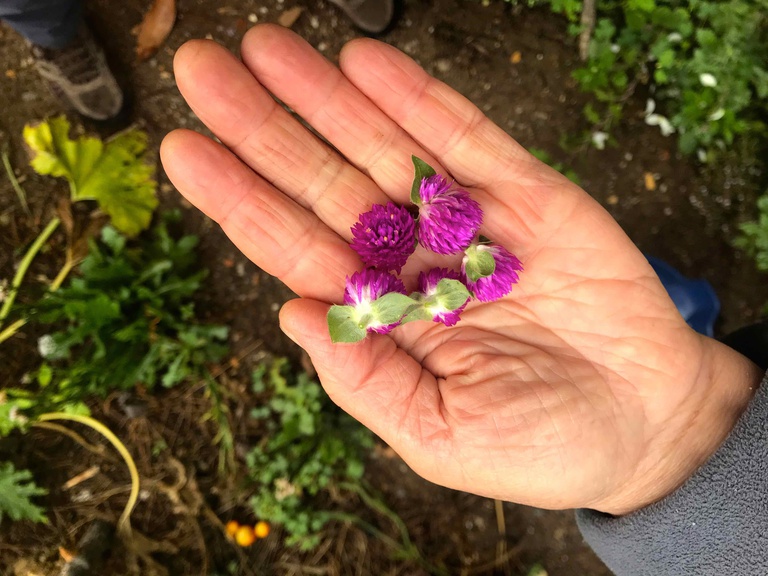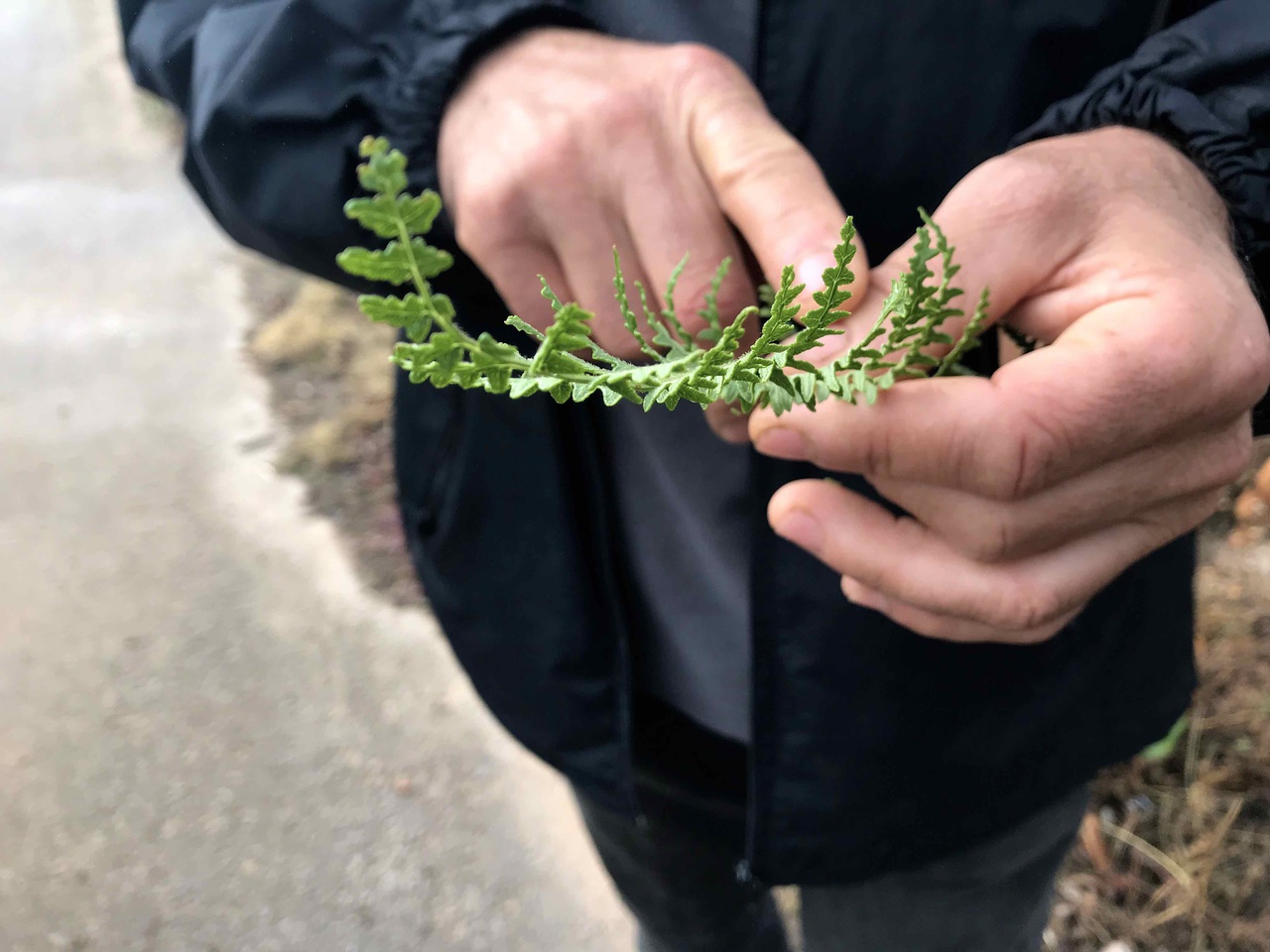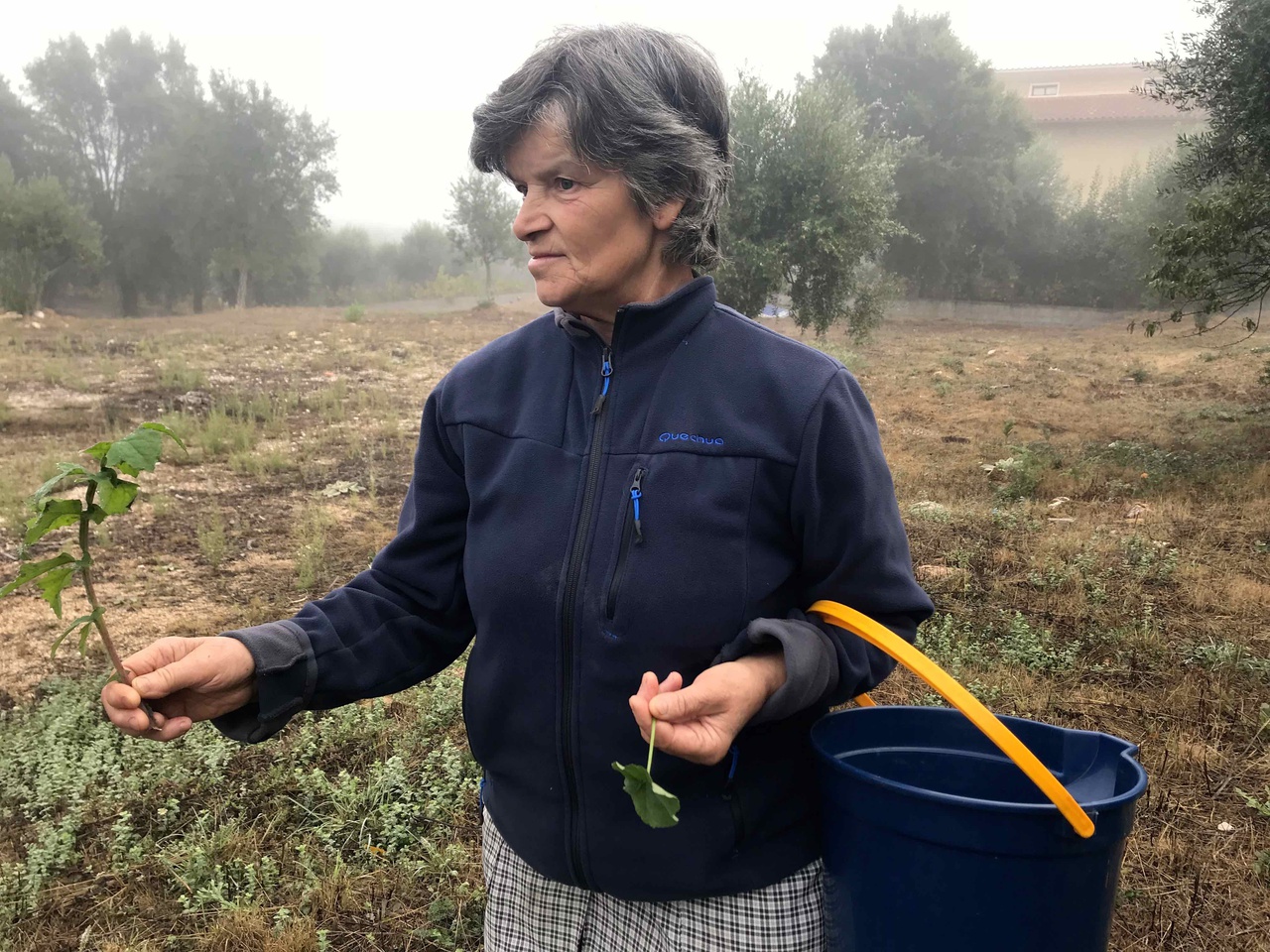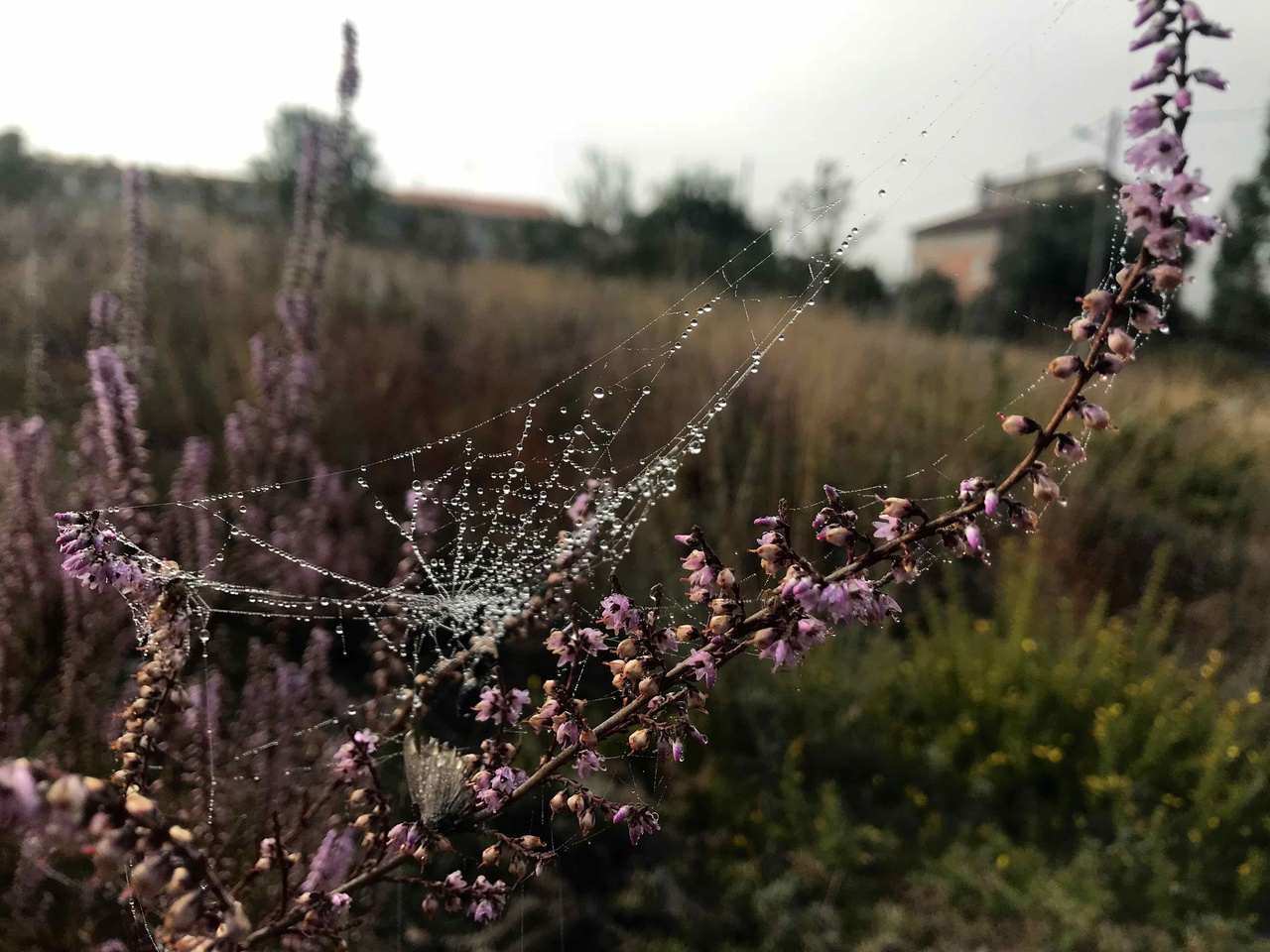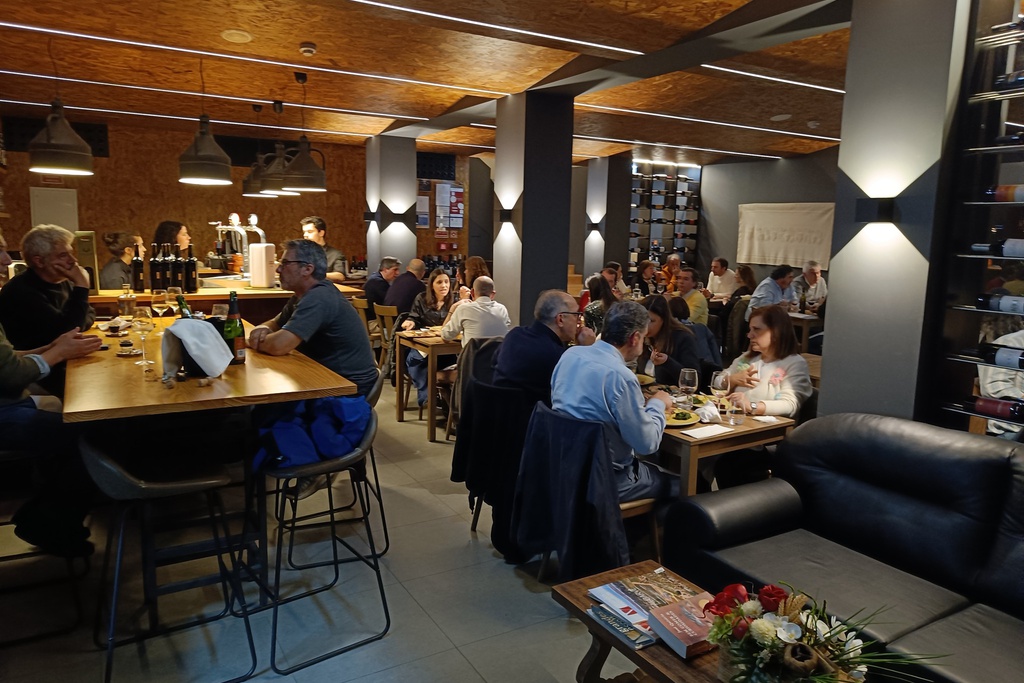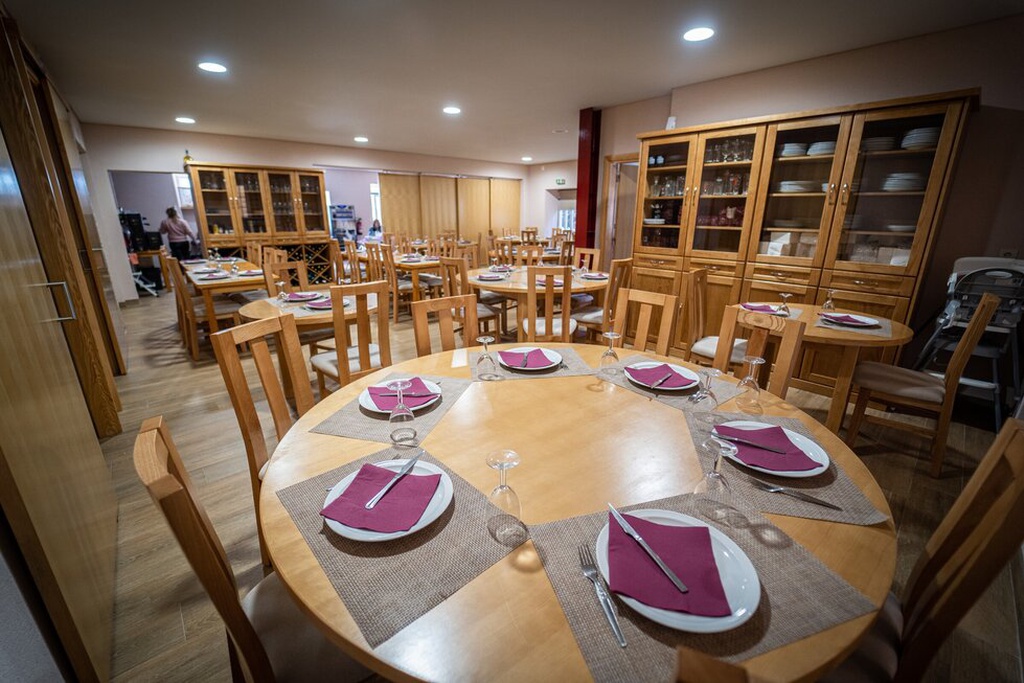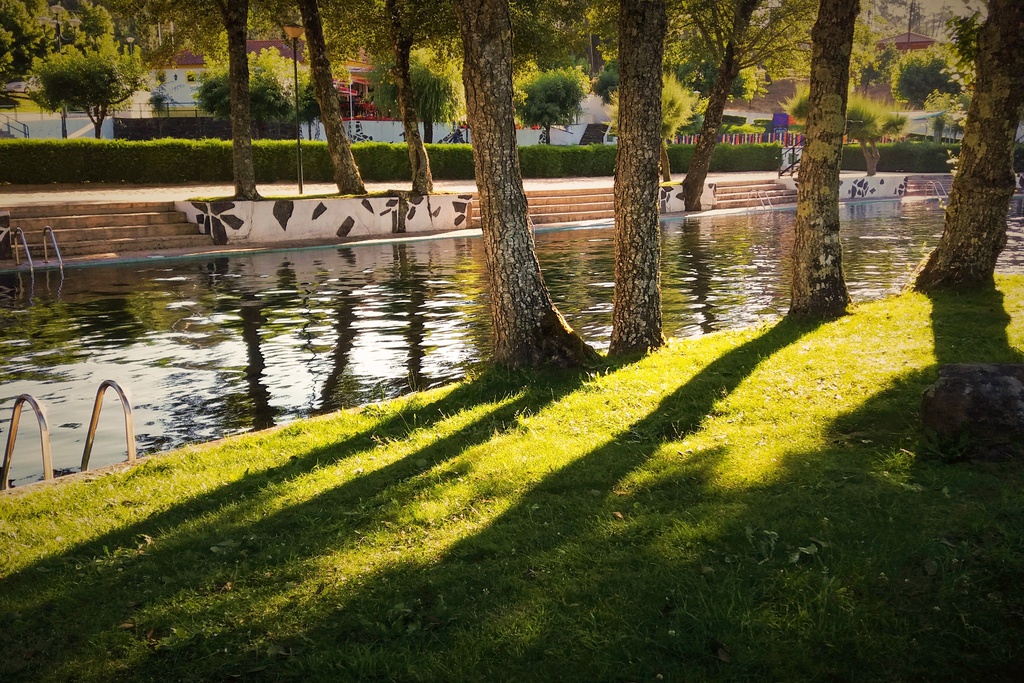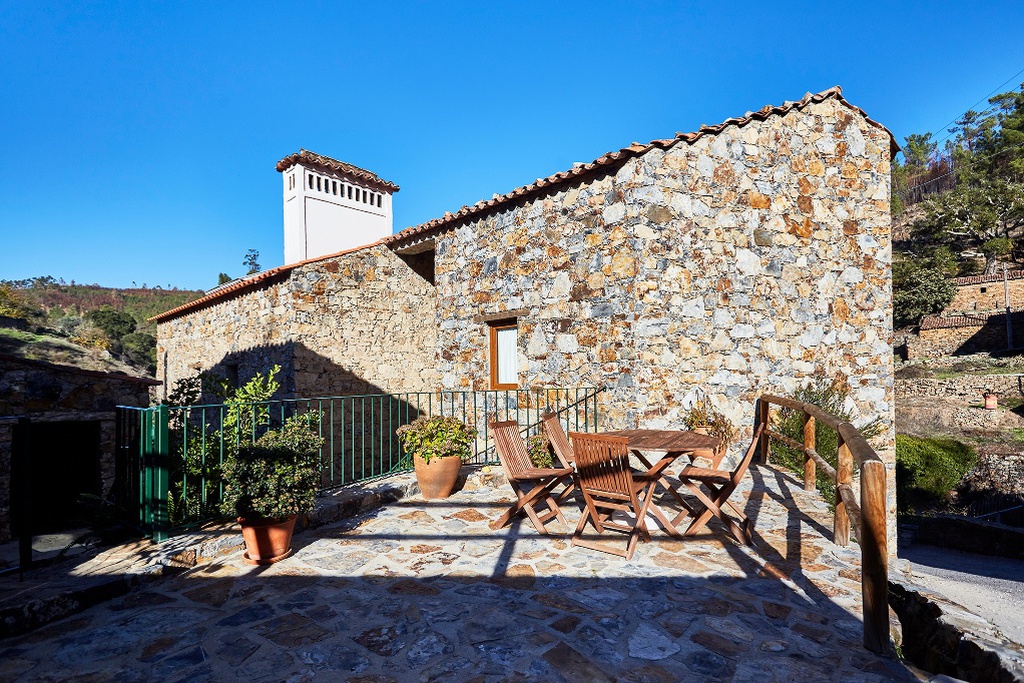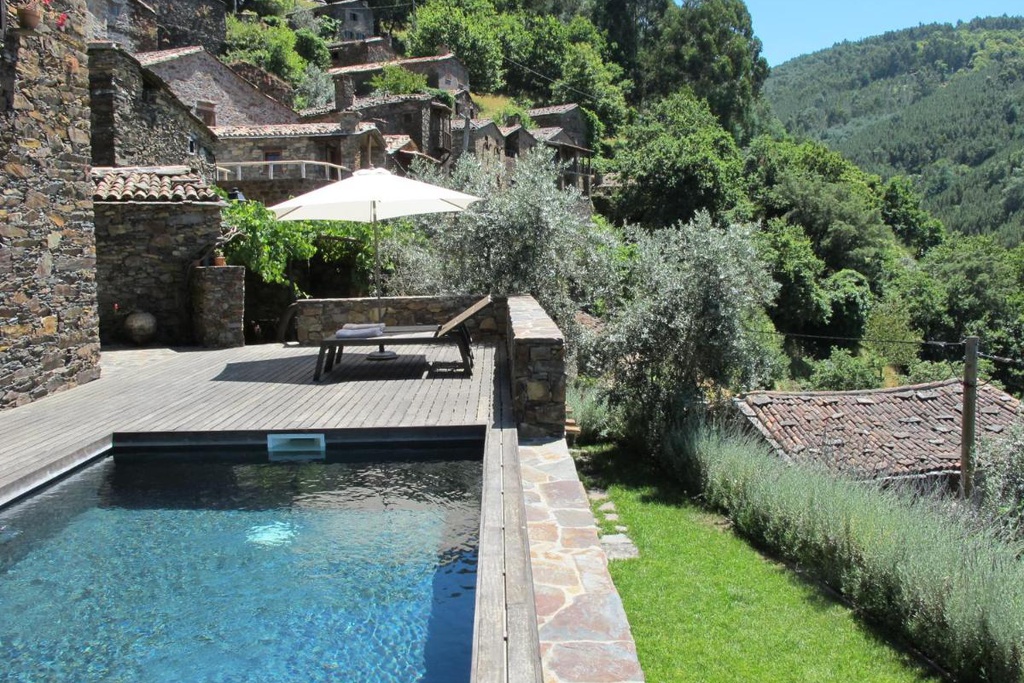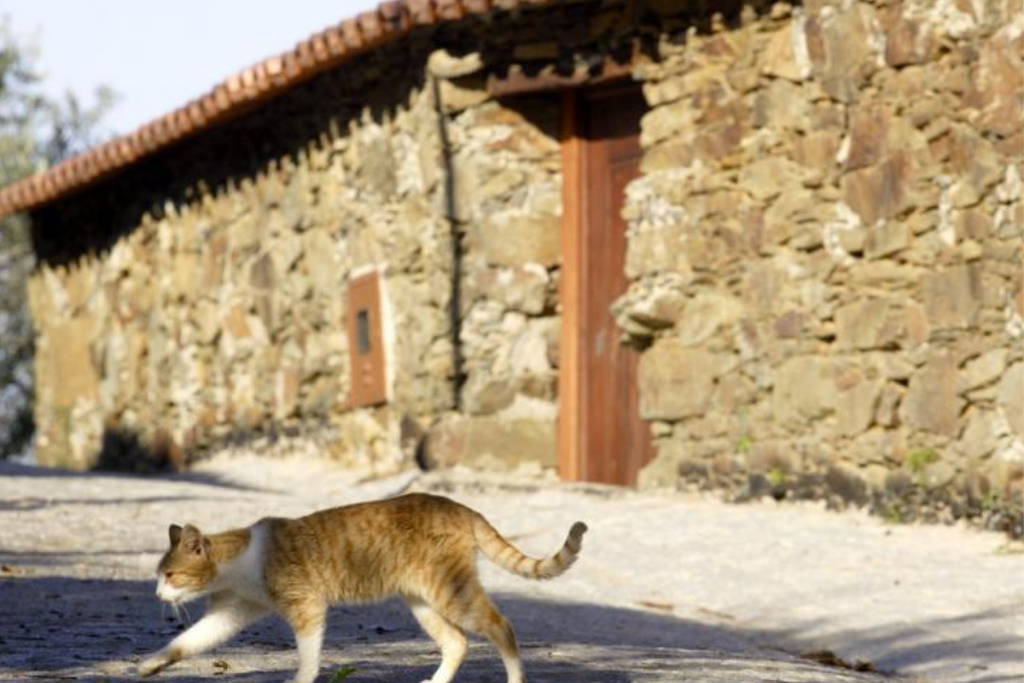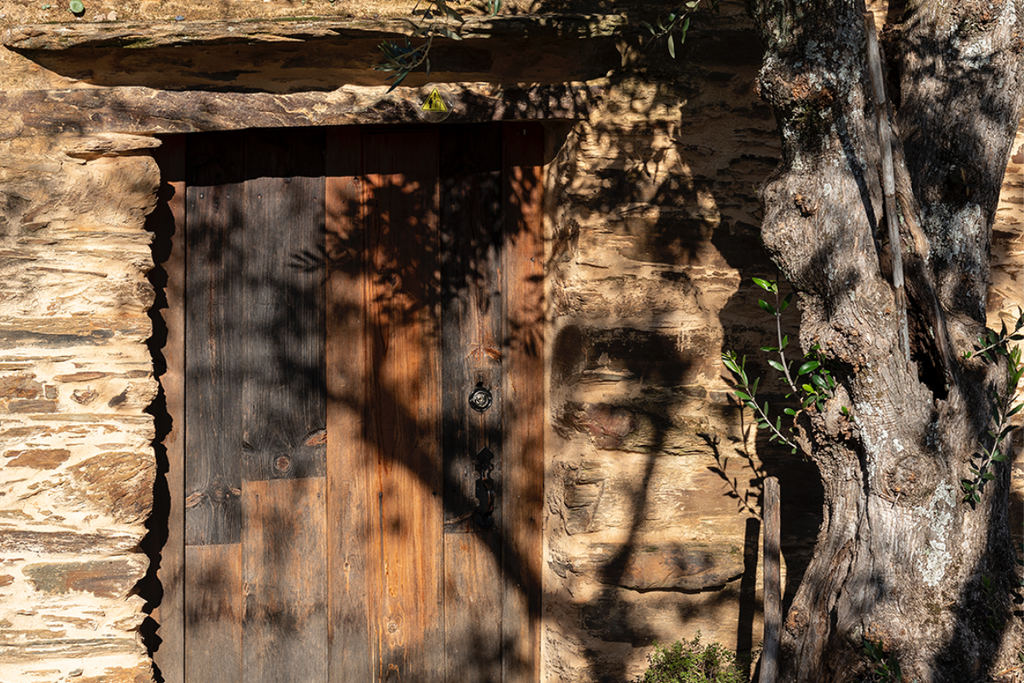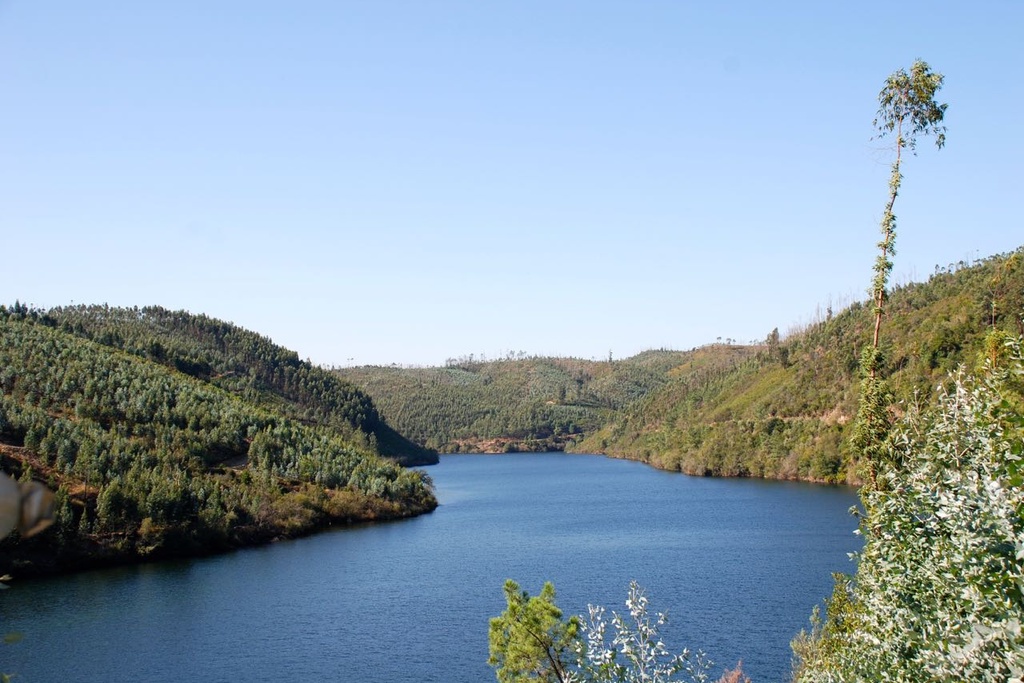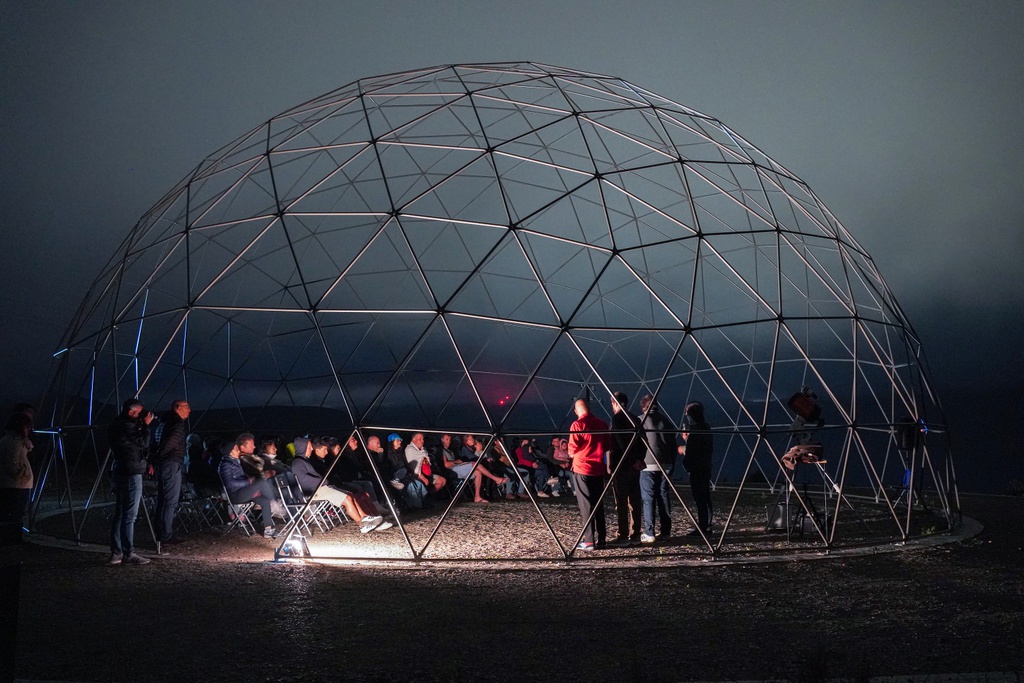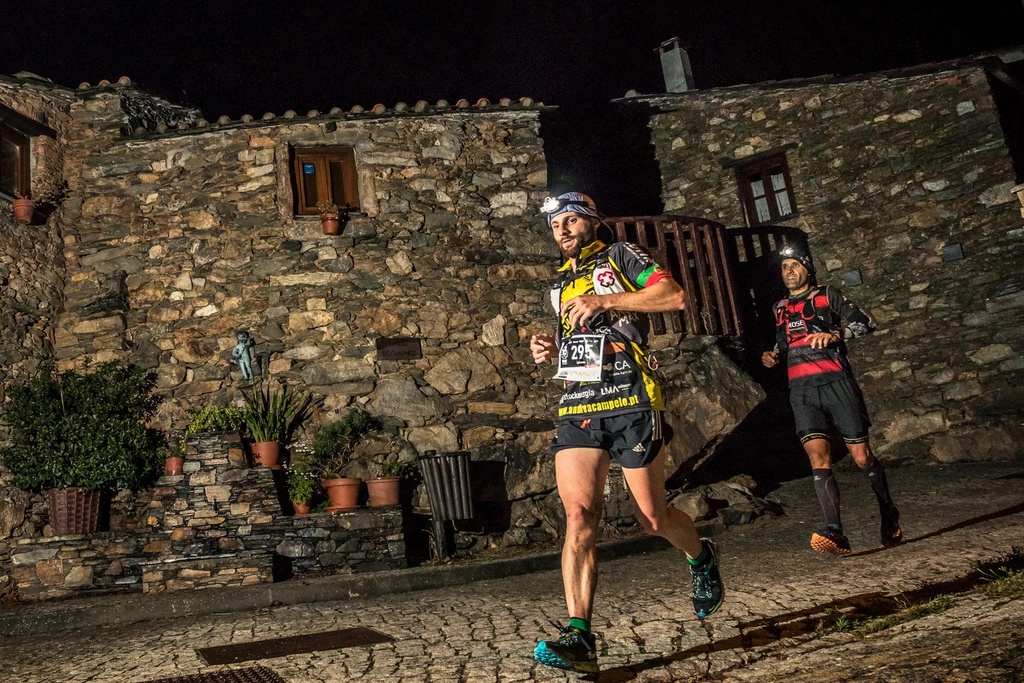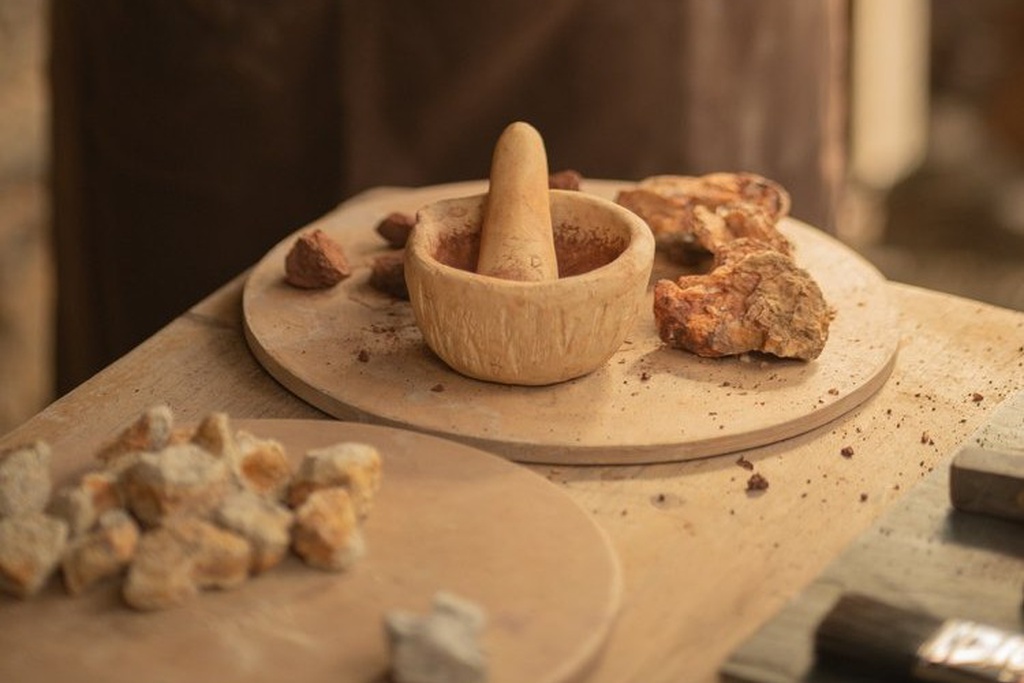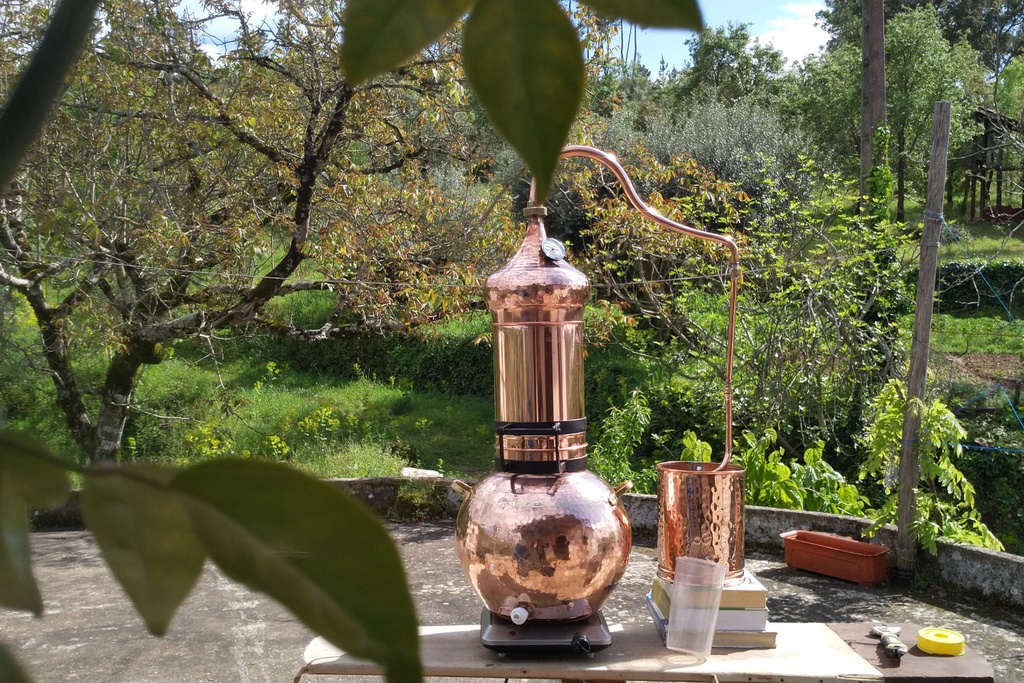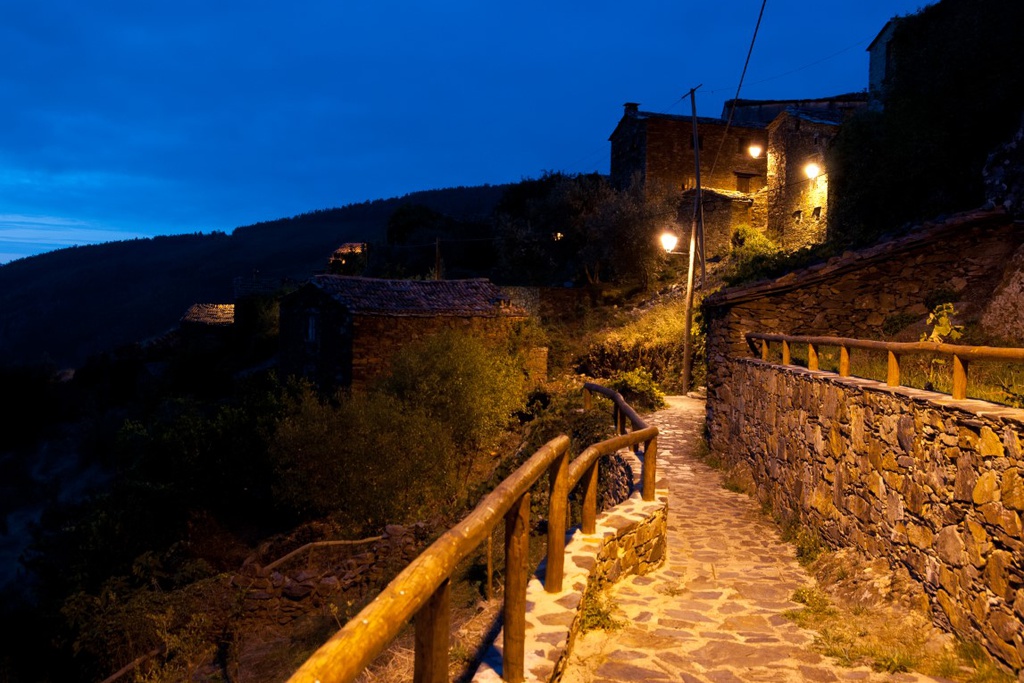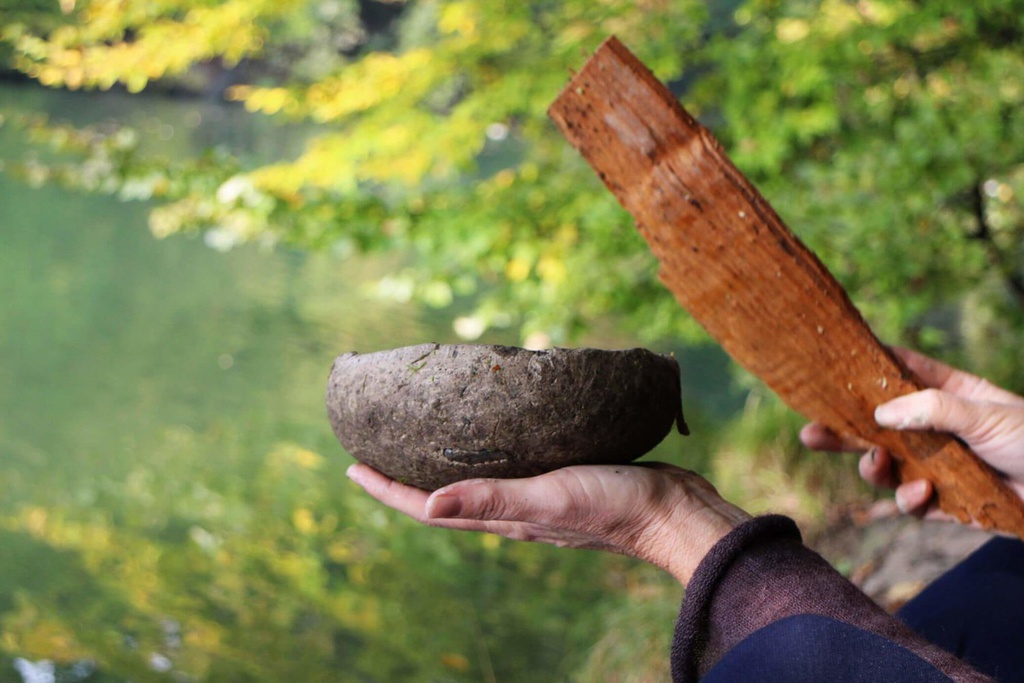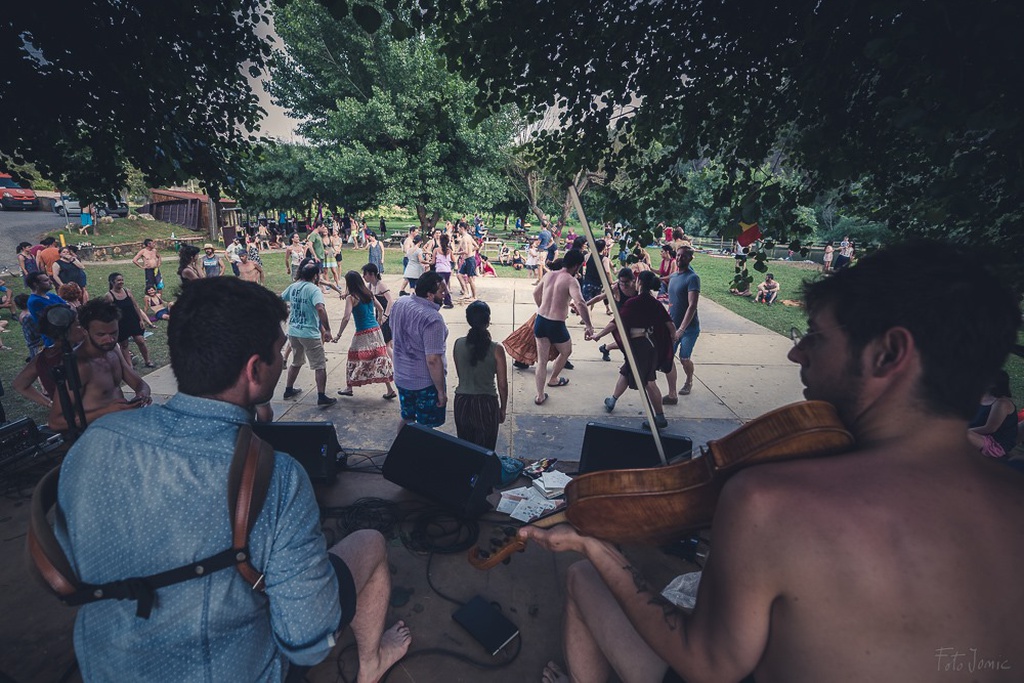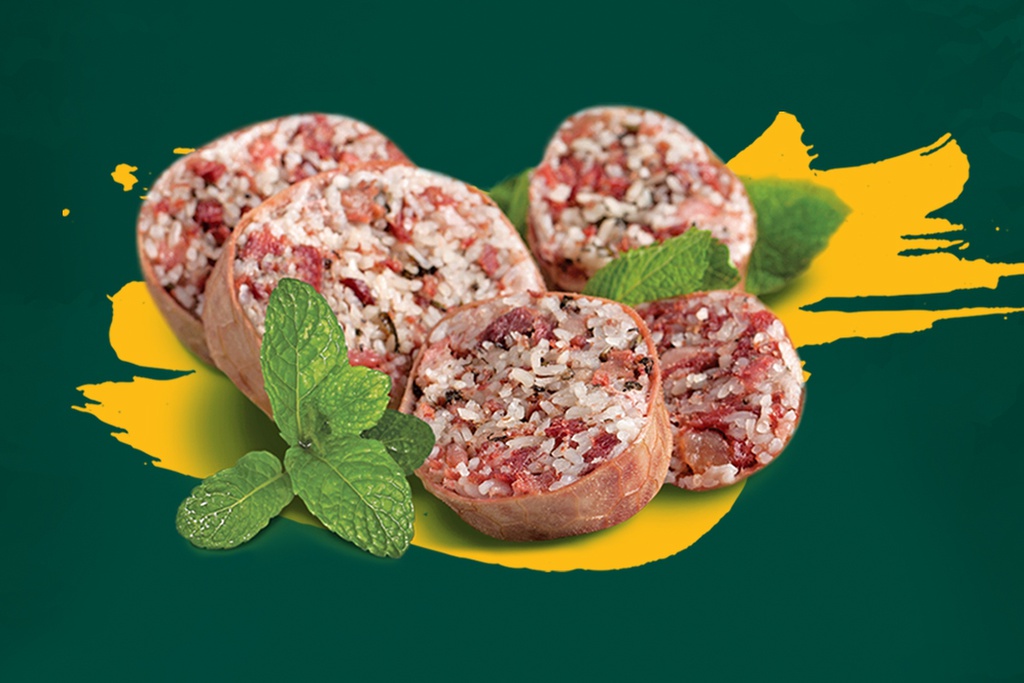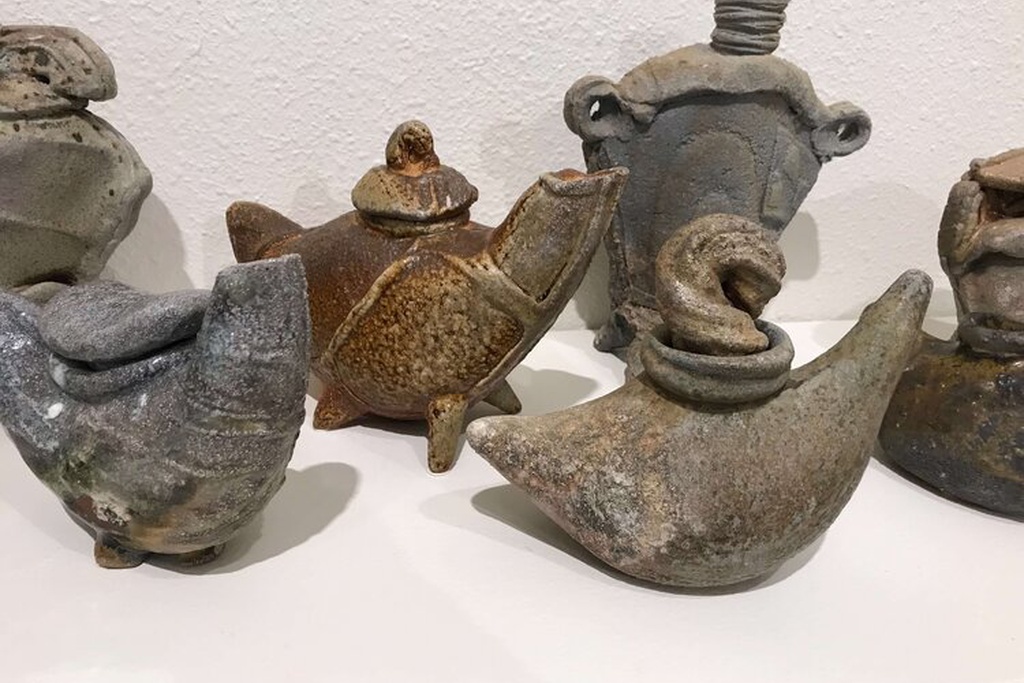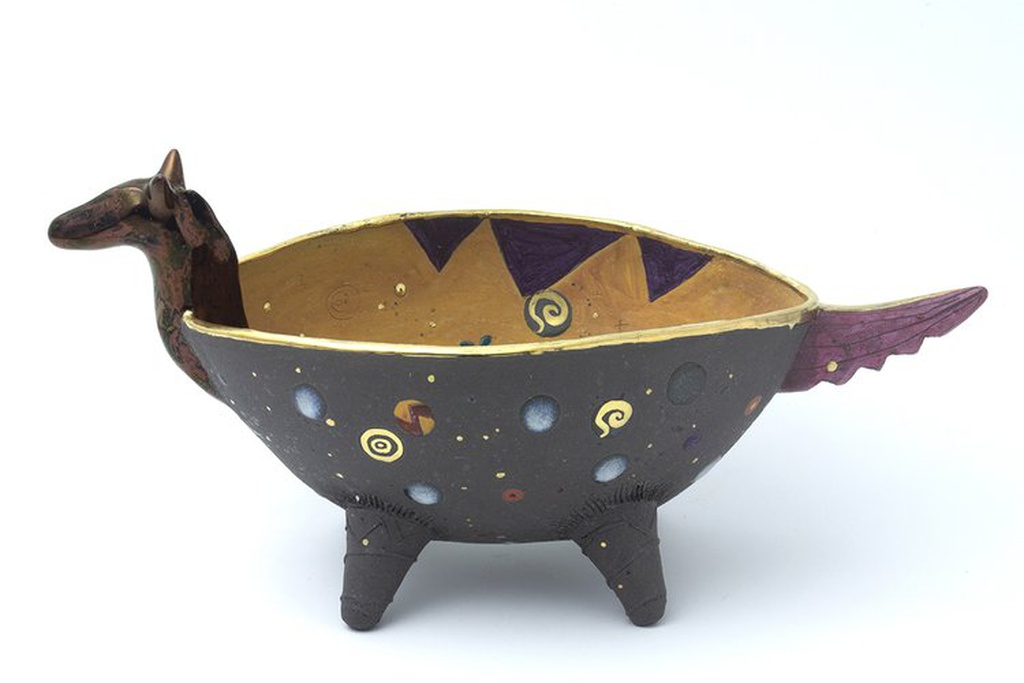On the winding road that takes us to Janeiro de Cima, the blue sky and the still warm sun contrast with the white of the clouds trapped in the valley below. If you have any doubts about where the River Zêzere is, just follow the fog that traces its course. Organic Farming Day, which took place on 17th October in this Aldeia do Xisto in Fundão county, was another step along the way for Earth Lab - The Return of Flax. This project was developed by Aldeias do Xisto and promotes the return of flax plantations to the banks of the Zêzere. It seeks to involve whole communities and recreate the entire production cycle of flax, incorporating growing, processing and marketing as well as dyeing, weaving and the design of new products.
As we descend into the village we are swallowed by the damp, cold fog that rolls in from the river. Later it will rise and allow the sun to reverberate on the dew like small diamonds on the leaves. But for now, you must tightly fasten your coat. The trainer, Ricardo Ferreira, is already in the company of Lurdes, Ilídio and Filomena, residents of Janeiro de Cima, who want to join the morning field trip. Shortly afterwards Neuza Caires, who booked her place at this event through Bookinxisto, arrives from Fundão.
Walking, looking, picking
We barely walk half a dozen steps, still within the bounds of the village’s, and already Ricardo and Lurdes are chatting over some plants, discussing the different names by which they are known. Lurdes has wide, in-depth knowledge of many of the plant species and collects specimens of all those she comes across. We learn that there are many that can be eaten in salads, such as the dandelion, very common on lawns and excellent for detoxifying the blood; clover, which can substitute salt, because it is acidic and gives a vinegary touch to a dressing; young bramble shoots; and wild radish, with its flavour very similar to rocket. But in these things it is really important to know what you pick and what you eat and, as with mushrooms, if in doubt there is no doubt: leave it alone and look for other species that you know very well. The foxglove, for example, provides digitalis for pharmaceutical use in the treatment of heart problems, but if ingested it can be lethal.
Any aromatic plant has medicinal applications and people in the villages retain this wisdom, passed down from generation to generation. This requires careful listening, going into the fields and looking at the plants. It is a cultural and medicinal heritage that is literally there for the picking: there are dozens of plants to be found on this short trail around Janeiro de Cima, to the delight of all the participants. Field woundwort, also known as Staggerweed, is excellent for diarrhoea. It is one of the many exotic plants that have been introduced into our country over the years, either because they have come in the trailers of international transportation of feeds and seeds, or, particularly in the case of ornamental plants, because people simply imported them to embellish their gardens.
The walk is slow, such is the enthusiasm with which the group debates each plant they find along the way. And the knowledge just keeps pouring in. The scent of wild mint suddenly fills the air, and Lurdes hastens to say that in the old days, when there were many mosquitoes, it was enough to put a sprig in each ear to prevent bites. There are no mosquitoes, so nobody tries this, but the image remains. Let’s carry on! Pimpernel is good for colds. Wild spinach is a very versatile and tasty delicacy in the kitchen. The flax-leaved daphne, cut at the stem and stuck in the ground, keeps moles away. If we give the animals a genistae (broom) infusion bath, we help them get rid of parasites. Ivy combats hair loss and dandruff.
We take ourselves along footpaths down to the river. Ilídio stops and looks around at the memories of those steps. This is the path he walked most in his life. His family had land across the river, which had to be cultivated and cared for every day. To do that you had to go by boat. In fact, everyone in Janeiro de Cima had a boat. “In the old days, we sometimes wanted to take our boat to the water and couldn’t, such was the number of other boats on the banks”, recalls Filomena Latado. Today there is still a solitary one there, which is covered, hardly used. The river flows calmly by, letting itself be enchanted by the luxuriant vegetation reflected on the surface. Time is so present here.
Principles of Organic Farming
After lunch, in the olive press, the theoretical part involves more members of the public. About 16 people, mostly from the village, have come to learn about the principles of organic farming. The session starts by getting to know the ecosystem, flora, fauna and geological aspects: identifying trees, shrubs and ground cover, plants for organic farming and also aromatic, medicinal and edible plants. It is also important to know the soil types and decide whether or not to use them. This workshop focused mainly on natural fertilisers, herbicides, pesticides and fungicides, so there was more discussion around the applications of compost and slurry (the term used for natural fertilisers, herbicides, pesticides and fungicides).
“I’m loving it!”, exclaims Neuza Caires. She came from Fundão with a purpose, because she wants to “enjoy life better” by starting an organic vegetable garden on her small 2,500m2 plot. “Just what I have learned today adds so much information to what I want to do”, she concludes. She guarantees that she will be a regular participant in the activities of the Return of the Flax project. Isaura Dias dos Santos, a resident of Janeiro de Cima, is on the opposite end of the spectrum to her workshop colleague. She has been cultivating a vegetable garden for 30 years. But she still knows that you never know everything, such as “plants that I didn’t know the name of, or their uses”. And she enthusiastically remarks that after what she saw and heard, she will “change some things about the way we work the vegetable garden”.
Text and photos: Bruno Ramos


